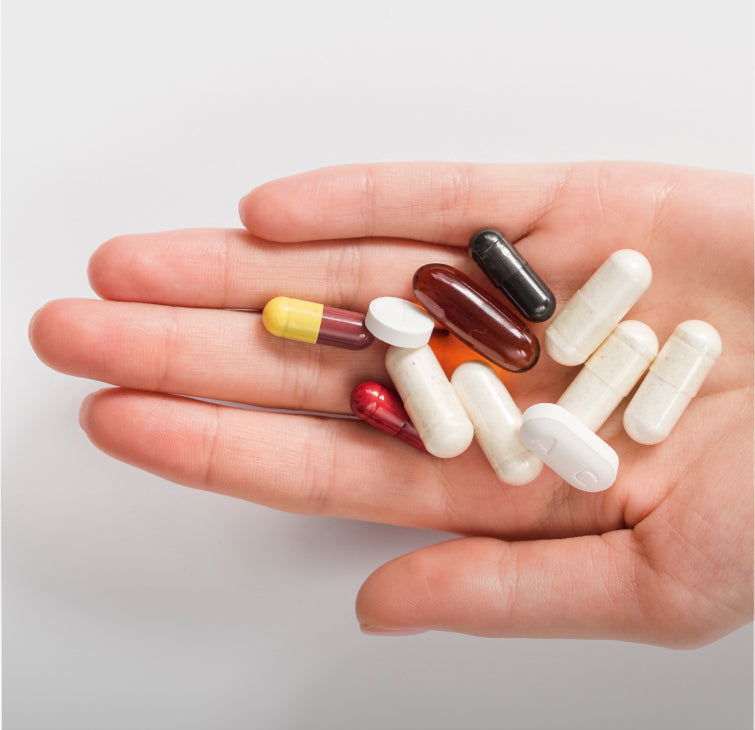Omega-3s are essential fatty acids that are essential for the proper functioning of our bodies. They play a key role in cardiovascular health, brain development, and reducing inflammation. But do you know the difference between the different Omega-3s: ALA, EPA, and DHA ?
In this article we review their benefits, their synthesis and how to ensure you have sufficient intake.
Omega 3 are polyunsaturated fatty acids
Fatty acids are the main molecules of lipids found in oils and fats.
Fats, solid at room temperature, are composed of saturated fatty acids.
They serve as an energy reserve for the body, but their excessive accumulation in tissues and arteries is harmful to cardiovascular health.
Oils, liquid at room temperature, are made up of unsaturated fatty acids. The different unsaturated fatty acids are classified into categories, the famous Omegas, the main ones being 3, 6 and 9.
These distinctions are based on their molecular structure, which also gives them specific properties.
Among the unsaturated fatty acids, we distinguish:
- Monounsaturated Fatty Acids : Omega 9.
These are not essential because the body can synthesize them from polyunsaturated fatty acids Omega-3 and Omega-6, but their impact on health is also positive. Olive oil is particularly rich in Omega 9.
- Polyunsaturated Fatty Acids : Omega 3 and Omega 6
The dietary precursor of Omega 6 is linoleic acid (LA). It is found in varying proportions in most edible oils. The human body can synthesize omega-6 from linoleic acid in quantities generally sufficient for its needs.
Omega-3s are essential fatty acids. That is, they are essential for the body, which cannot produce them on its own. Therefore, dietary intake is essential.
The different types of Omega 3: ALA, EPA and DHA
The two most important types of Omega 3 are EPA and DHA . However, they are quite rare in the food chain because they are only present in oily fish and some algae .
Both EPA and DHA can be synthesized in different proportions by a third omega 3, alpha linolenic acid (ALA), which is present in large quantities in certain edible oils such as rapeseed, walnut and flax oil.
However, while EPA can be synthesized in sufficient quantity by the body from ALA, this is not the case with DHA.
The conversion of DHA from ALA has a very low efficiency, of the order of 1%, which is insufficient under normal conditions to meet the body's needs.
New scientific knowledge demonstrates the benefits of DHA and EPA more and more every day.
These fatty acids play a fundamental role in reducing inflammation, cardiovascular health, brain function, vision, stress resistance, fetal development, etc.
EPA, the semi-essential Omega 3
Omega-3 EPA is known for its anti-inflammatory effects and its benefits in cardiovascular health.
EPA is involved in reducing inflammatory reactions by inhibiting the production of pro-inflammatory cytokines and prostaglandins.
Cytokines signal the immune system to the site of inflammation, while prostaglandins are involved in the inflammatory response and pain. By reducing the production of these molecules, EPA helps reduce chronic inflammation (such as rheumatoid arthritis).
For cardiovascular health, EPA reduces levels of fats in the blood (triglycerides), the accumulation of which increases the risk of heart and vascular disease.
The EPA required by the body can come either from direct intake of oily fish, but their heavy metal content is linked to pollution and therefore in a healthier way from its synthesis by the body from vegetable oils rich in Omega 3 ALA.
DHA, the essential Omega 3
Docosahexaenoic acid (DHA) is essential for the formation of nerve and brain tissue. It represents approximately 40% of the brain's mass !
DHA is a key component of brain and nerve cell membranes, contributing to the fluidity and communication between neurons, making it essential for the development and maintenance of cognitive functions.
From early childhood and even the fetal stage to old age, DHA is a valuable aid for learning and memory abilities.
The relationship between DHA and the reduction of the risk of neurodegenerative disorders, such as Alzheimer's disease, is currently the subject of numerous scientific studies.
DHA is also important for eye health. It is a major component of the retina. Its presence helps maintain optimal vision and prevent eye fatigue and degeneration, which is especially important because screens put a strain on our eyes.
Omega 3 DHA could even have a positive effect on cancers and several teams of researchers are working on the links between good levels of DHA and the lower prevalence of certain cancers .
Finally, like EPA, DHA has anti-inflammatory properties similar to those of EPA and improves the prevention of cardiovascular disease.
As proof of its increasingly recognized benefits, the European Health Agency (EFSA) has been recommending since 2023 to increase DHA intake beyond the 250 mg/day usually recommended for all sensitive individuals such as pregnant and breastfeeding women and seniors.
How to get your fill of EPA and DHA in a healthy way?
To ensure adequate dietary intake of EPA and DHA, it is essential to consider two major points.
On the one hand, marine pollution requires limiting the consumption of oily fish, rich in Omega 3, to twice a week, in accordance with the recommendations of health authorities.
On the other hand, although the body can convert about 10% of the ALA present in most dietary oils to EPA, it only converts about 1% of ALA to DHA.
It will therefore be necessary to pay particular attention to having safe and healthy DHA intakes, including through long-term intake.
To do this, it is possible to take fish oil supplements, the heavy metal content of which is reduced by filtration, or to choose a supplement based on Shizochytrium algae oil grown in a bioreactor.
This latter source has the advantage of being free of heavy metals and having no impact on marine fauna.
Conclusion
Omega 3s are as essential for health at any age as vitamins, so it is important to ensure that you have sufficient dietary intake.
However, the consumption of oily fish rich in Omega 3, which was once encouraged, must now be limited due to marine pollution. This is particularly the case for young children.
The alternative is to regularly consume cooking oils rich in Omega 3 (ALA).*
Omega 3 DHA must be provided by specific supplements. To do this, it is possible to consume fish oils filtered according to European standards or to choose a more ethical alternative. This is the choice we made at Argalys by selecting algae oil grown in a controlled environment for our Omega 3 supplement .
* Note that oils rich in Omega 3 are all very sensitive to oxidation by exposure to air. They should be protected and consumed fairly quickly.
 04 74 03 98 80
04 74 03 98 80









